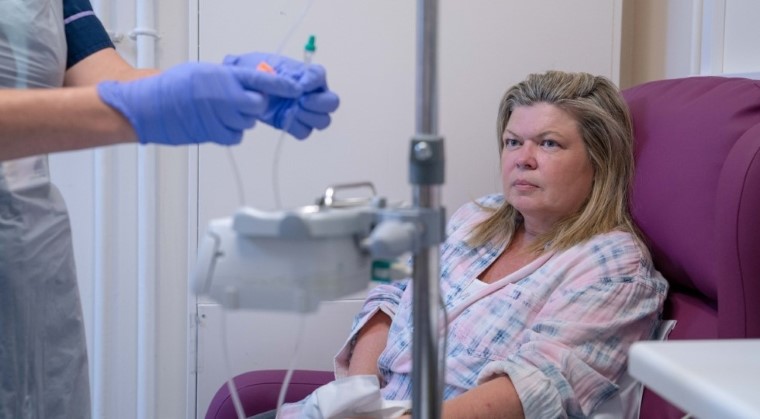In this blog we discuss the Royal College of Radiologists (RCR) 2022 workforce census reports and what they mean for breast cancer. The reports give an overview of workforce shortages and challenges across both the clinical oncology and clinical radiology workforce.
In 2022, the Royal College of Radiologists (RCR) released their annual workforce census report, giving an overview of shortages and challenges across the clinical oncology and clinical radiology workforce. We explore what the report means for breast cancer.
The impact of workforce shortages
For years, we’ve been highlighting the impact of workforce shortages on the diagnosis, treatment and care of breast cancer patients. We’ve been calling on the government to take action to ensure the NHS has the necessary staff in place to be able to provide world-class care.
For far too long, there have been large gaps across the breast cancer workforce, from clinicians working in diagnostics and screening, to oncologists and clinical nurse specialists providing treatment and care.
“Despite the tireless work of the NHS, chronic staff shortages are denying people with breast cancer the best chance of early diagnosis and timely access to life-changing treatments.” Baroness Delyth Morgan
Last week, the RCR published their annual workforce census for Radiology and Clinical Oncology. It highlights the current workforce numbers in both areas, and importantly provides evidence of the need to recruit, retain and support the staff working across radiology and oncology.
What the data shows
Yet again, the 2022 census paints a bleak picture of the challenges facing the ability of the NHS to offer crucial care such as access to timely diagnosis and drug treatments.
There are already large gaps in amongst breast clinical oncologists – who play a pivotal role in the delivery of cancer treatment. Worryingly this is set to significantly worsen over the next 10 years with 46% of breast clinical oncologists projected to retire.
The census also highlighted the growing concerns about the ability to safely deliver high quality patient care. 1 in 2 cancer services reported that patients had experienced delays to their treatment due to workforce shortages. 90% of directors for clinical radiology felt concerned that staff shortages would impact on patient care. We know shortages are having a detrimental impact on the wellbeing of healthcare professionals too. For example, with cancer services reporting high levels or concern about staff morale and burn out, 96% and 100%, in oncology and radiology respectively. That’s why we recently launched a survey to healthcare professionals across the UK, asking about the pressure points they’re experiencing and how we can help.
What we’re doing
We’re continuing to call on the government to urgently publish the long overdue NHS workforce plan, setting out independently verified forecasts for the number of staff needed in the next 5,10 and 15 years. Crucially, it must provide significant investment in growing, retaining and supporting the breast cancer workforce.
Our recent Blueprint to transform breast screening by 2028 called for NHS England to address long-standing gaps and inefficiencies in the training of breast screening and staff.
We’re also continuing our work with the Pan-Alliance breast cancer group and the UK Breast Cancer Group, to ensure breast cancer services in England can continue to deliver life changing drugs to patients who need them. We won’t stop until we know that every patient with breast cancer is guaranteed the best chance of survival now and in the future.
If you want to share your experience of how workforce shortages are impacting your care, tell us your story.
